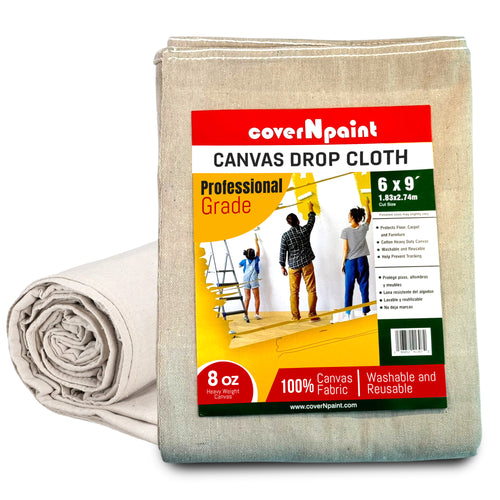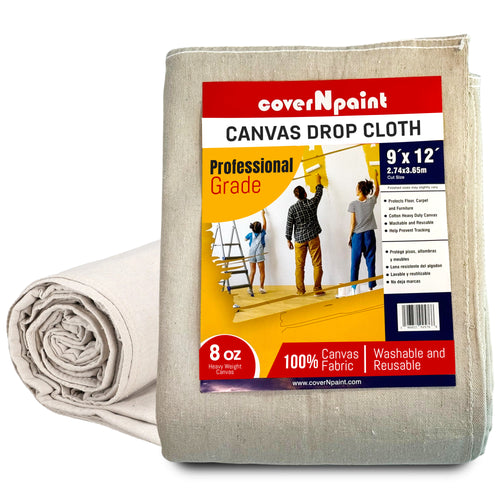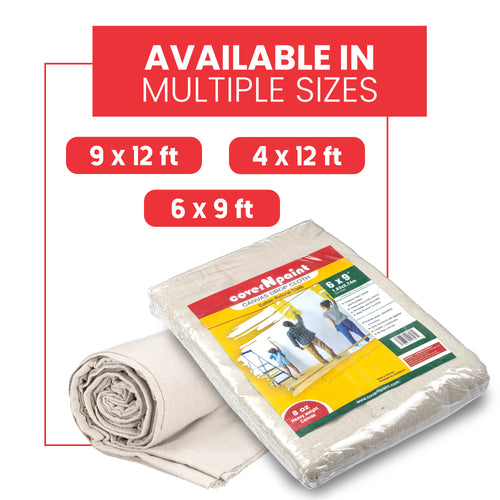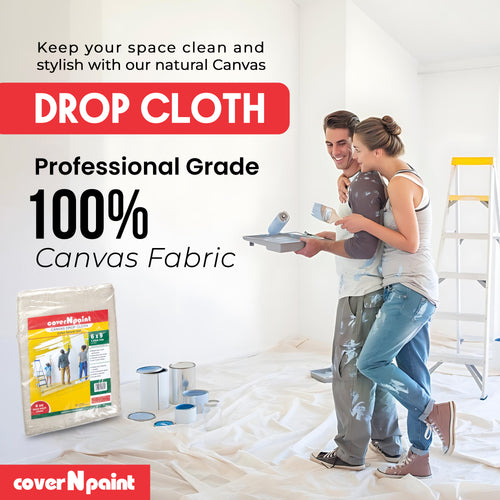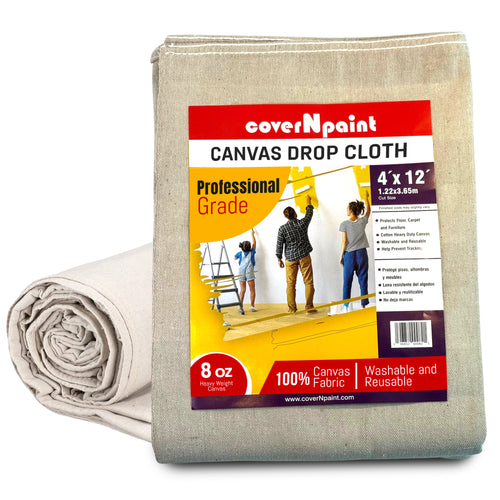Painting projects, whether at home or professionally, can get messy without the right preparation. Paint tarps, painters drop cloths, and canvas drop cloths are essential tools for protecting floors and furniture. However, one of the biggest challenges users face is keeping these protective covers secure. An unsecured paint drop cloth can easily slip, bunch up, or shift, creating trip hazards and increasing the risk of spills.
In this guide, we’ll explain how to secure paint tarps properly and prevent slips or spills, ensuring a safer and more efficient painting process.
Why Securing Paint Tarps Is Essential
1. Preventing Accidents
Loose drop cloths can easily become slippery underfoot. This poses risks not only to painters but also to anyone walking through the area.
2. Avoiding Paint Spills
When paint tarps shift out of place, they expose unprotected floor sections. Even a small drip can stain hardwood, carpets, or tiles permanently.
3. Improving Efficiency
A secure canvas drop cloth allows painters to move freely without having to readjust the tarp constantly, saving time and effort.
For additional safety strategies, see our guide on Painters Drop Cloth Safety Guide: Preventing Slips, Trips, and Falls.
Step 1: Choosing The Right Paint Tarps
Canvas Drop Cloths
-
Best for durability and reusability.
-
Heavier weight helps them stay in place naturally.
-
Absorbent, reducing paint smears and slips.
Plastic Paint Drop Cloths
-
Lightweight and waterproof.
-
Can shift easily, so require more securing.
-
Ideal for short-term projects.
Hybrid Options
-
Poly-backed canvas combines absorbency with waterproof protection.
-
Safer for high-traffic areas as they balance grip and spill resistance.
Step 2: Preparing The Work Area
Before laying down paint tarps:
-
Clear The Space – Move furniture or obstacles that could bunch up the drop cloth.
-
Clean The Floor – Dust and debris reduce friction, making tarps more likely to slip.
-
Measure Correctly – Choose a drop cloth that fits the area with enough overlap but without excessive excess that could cause tripping.
Step 3: Securing Paint Tarps
Use Painter’s Tape
-
Tape down the edges of lightweight paint tarps to keep them from sliding.
-
Especially effective on smooth surfaces like tile or hardwood.
Apply Non-Slip Pads Or Mats
-
Place non-slip rug pads underneath canvas drop cloths.
-
Ideal for long projects where tarps need to remain in place for several days.
Weigh Down Edges
-
Use small paint cans or weights to hold corners securely.
-
Works well outdoors where wind can lift tarps.
Clip Or Fasten To Surfaces
-
On staircases or vertical areas, use spring clips or fasteners to secure paint drop cloths tightly.
Step 4: Preventing Slips During Use
Smooth Out Bunched Areas
Check periodically for folds or wrinkles in your painters drop cloth and smooth them out.
Layer Strategically
For heavy-duty projects, layer a canvas drop cloth on top of a plastic liner. Canvas absorbs spills, while plastic provides waterproof protection.
Secure High-Traffic Zones
Focus on areas where people walk frequently. Tape edges and check stability often to prevent accidents.
Step 5: Safety Tips While Working With Paint Tarps
-
Wear Non-Slip Shoes: Reduces slipping on plastic tarps.
-
Check Regularly: Re-secure tarps during long painting sessions.
-
Avoid Excess Overlaps: Extra fabric can cause tripping hazards.
-
Use Proper Lighting: Shadows can hide folds or unsecured edges.
A Curiosity-Building Note
Most painters focus only on covering the floor, but how you secure your paint tarps is just as important as using them in the first place. Even minor adjustments in taping, layering, or choosing the right material can completely change your painting experience. coverNpaint USA continues to emphasize these overlooked techniques, helping both professionals and DIY enthusiasts prevent costly mistakes while making their projects safer.
Benefits Of Properly Securing Paint Tarps
-
Safety First: Prevents slips, trips, and injuries.
-
Cleaner Results: Protects floors and surfaces without leaving gaps.
-
Reduced Stress: Fewer interruptions from repositioning tarps.
-
Professional Standards: Creates a stable, organized workspace.
FAQs
Q1: What is the safest type of paint tarp for indoor use?
Canvas drop cloths are the safest due to their weight, absorbency, and non-slip properties.
Q2: How do I stop plastic paint tarps from slipping?
Secure them with painter’s tape or place a non-slip rug pad underneath for added stability.
Q3: Can I reuse paint tarps?
Yes, especially canvas drop cloths. They can be washed, dried, and reused for multiple projects.
Q4: Should I tape down a canvas drop cloth?
In most cases, the weight of canvas is enough, but taping helps when working on smooth or slippery floors.
Q5: What’s the best way to secure tarps outdoors?
Weigh down the corners with paint cans, bricks, or use stakes if working on soil or grass.




